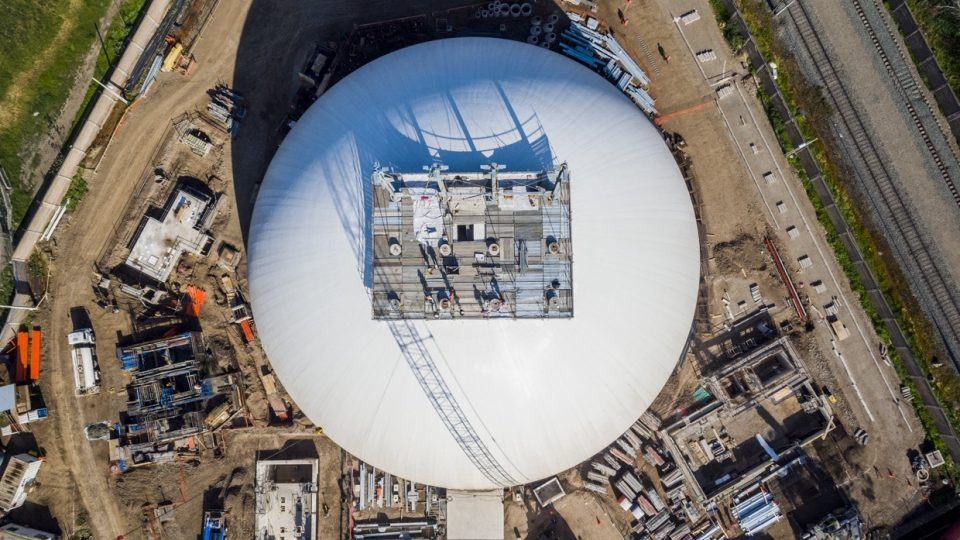For a new clinker storage site in Santiago, Chile, BSA Cementos needed massive storage that would stay secure, no matter how much the earth might shake.
Dome Technology was contracted to build a dome that would increase BSA Cementos production by 950,000 tons per year during the first stage of operation, with as much as 1,900,000 tons a year being processed per year. The dome could deliver on that, plus withstand earthquakes and other natural disasters.

Chile is known for its seismic activity, “but even more important than that, we are known to have one of the most rigorous building codes regarding the considerations to be accounted for when doing any type of construction,” Araya said. ”The dome’s geometry gives it excellent stability and load-absorption characteristics; therefore, this design has important advantages in meeting seismic requirements that are mandatory in our country, which will as well translate into savings during construction.”
Dome Technology’s reinforced concrete domes withstand earthquakes, hurricanes, and the test of time and are trusted by schools, communities, and governments to protect their most critical infrastructure and valuable assets. The dome’s natural-disaster resistance is a product of geometry; the double curvature provides the ability to distribute a given load in two directions, resulting in twice the strength of a single curved wall like that of a traditional silo.
Our domes can be engineered to meet FEMA standards for wind and projectile resistance and are chosen for some of the most seismic-prone areas of the world based on the ability to withstand movement. Heat and fire protection is inherent as each dome employs Type 1 (fire-resistant) construction. In the event of a fire, the reinforced concrete dome maintains structural integrity better than wood or even steel structures.
For more information, visit the BSA project summary.